Podcast: Play in new window | Download
Subscribe: Apple Podcasts | RSS
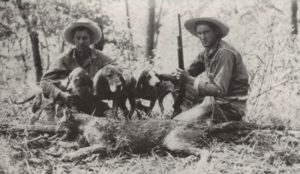
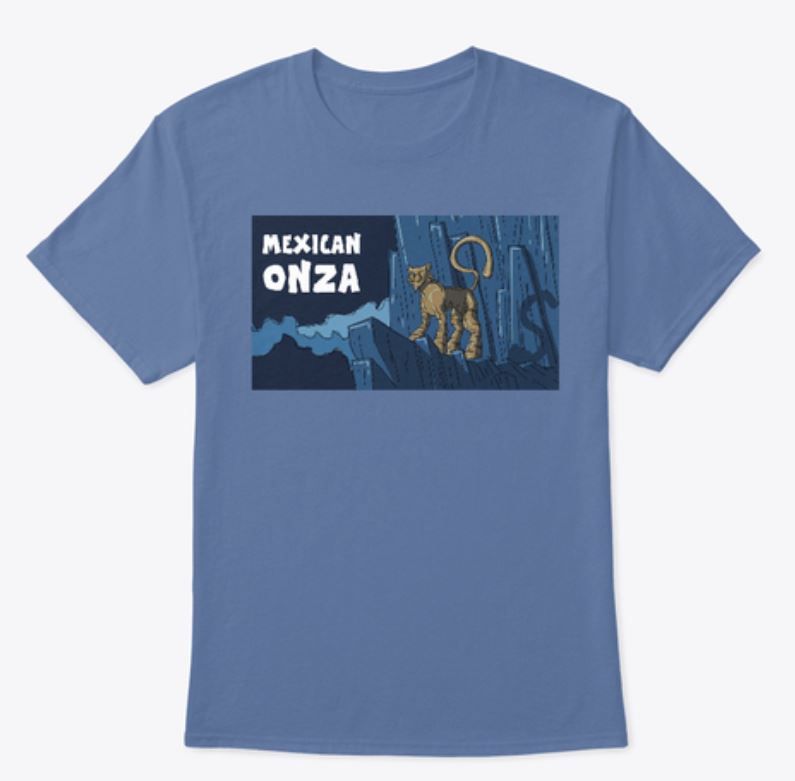 Buy the official t-shirt here: https://teespring.com/mexican-onza?tsmac=store&tsmic=mexico-unexplained&pid=2&cid=6046
Buy the official t-shirt here: https://teespring.com/mexican-onza?tsmac=store&tsmic=mexico-unexplained&pid=2&cid=6046
In the mid-1930s two experienced American hunters, Dale and Clell Lee, began a small hunting guide operation in the wild Sierra Madre of the Mexican state of Sonora. The Lee brothers had quite a profitable business taking other visiting hunters, mostly other fellow Americans, on hunting excursions in the northwestern Mexican wilderness. For a special client, Indiana banker Joseph Shirk, the Lees relocated their operation temporarily to the south in 1938, to the mountains of the state of Sinaloa. Shirk wanted to hunt jaguars and La Silla Mountain, which was rich in all sorts of wildlife, was their destination. On this weeklong trip, the three hunters eventually treed and shot a very large cat, which was neither a jaguar or a cougar, the two types of large felines native to Mexico. This cat was much larger than a jaguar or cougar and its ears, legs and body were longer than either type of traditional Mexican wildcat. The Lees had heard rumors of an altogether different feline Mexican predator called an “onza” and were convinced that this example belonged to the class of creatures only previously described in legends and vague historical accounts. The hunters measured and photographed the great cat and then butchered it. Joseph Shirk took the skin and the skull of the animal back home to Indiana with him. The Lees shared their experience with zoologists and the American press but were not taken seriously by either. After their bad experiences, they only shared their story reluctantly some 20 years after the event, and this time with Arizona author Robert Marshall. After interviewing the Lees, Marshall went down to Sinaloa in search of the legendary cat and published a book in 1961 titled simply, The Onza.
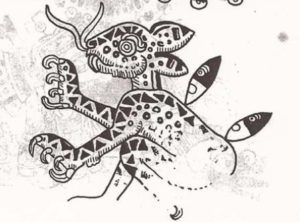 Pre-Hispanic Aztec accounts record a third large cat on the western fringes of the empire called the cuitlamiztli. The great personal zoo of Emperor Montezuma in the heart of the Aztec capital of Tenochtitlán had a few specimens of cuitlamiztli in its collection of animals. Bernal Díaz del Castillo, part of the initial party of Spanish conquistadors who entered the Aztec capital as invited guests, described three different types of large cats in the great zoo. Díaz writes about a part of the zoo where the emperor housed what he called the “carnivorous beasts of prey,” and among these animals existed “tigers and two kinds of lions.” The early Spanish explorers tended to use Spanish words to describe new animals discovered in their conquered territories thus causing some confusion among people reading their accounts many years later. The “tigers” according to Díaz meant our understanding of “jaguars.” The “two kinds of lions” phrase is a bit of a mystery. As already mentioned, besides the jaguar, in Mexico there is only one type of other large cat known by three different names, the cougar, puma or mountain lion. What was the second type of lion? Was it the cuitlamiztli or what was later called the onza? In some research about Bernal Díaz’s account of the Aztec zoo, some writers allege that Díaz describes the second lion as being “something like a wolf.” Looking at the original writings of the Spanish chronicler, this is not the case. Díaz quickly moves on from his “two types of lions” to describe “animals something like wolves and foxes and others smaller carnivorous animals.” He was most likely describing coyotes. His misattributed wolf references have nothing to do with the legendary onza. In fact, other than mentioning “two types of lions” he offers no specific details at all.
Pre-Hispanic Aztec accounts record a third large cat on the western fringes of the empire called the cuitlamiztli. The great personal zoo of Emperor Montezuma in the heart of the Aztec capital of Tenochtitlán had a few specimens of cuitlamiztli in its collection of animals. Bernal Díaz del Castillo, part of the initial party of Spanish conquistadors who entered the Aztec capital as invited guests, described three different types of large cats in the great zoo. Díaz writes about a part of the zoo where the emperor housed what he called the “carnivorous beasts of prey,” and among these animals existed “tigers and two kinds of lions.” The early Spanish explorers tended to use Spanish words to describe new animals discovered in their conquered territories thus causing some confusion among people reading their accounts many years later. The “tigers” according to Díaz meant our understanding of “jaguars.” The “two kinds of lions” phrase is a bit of a mystery. As already mentioned, besides the jaguar, in Mexico there is only one type of other large cat known by three different names, the cougar, puma or mountain lion. What was the second type of lion? Was it the cuitlamiztli or what was later called the onza? In some research about Bernal Díaz’s account of the Aztec zoo, some writers allege that Díaz describes the second lion as being “something like a wolf.” Looking at the original writings of the Spanish chronicler, this is not the case. Díaz quickly moves on from his “two types of lions” to describe “animals something like wolves and foxes and others smaller carnivorous animals.” He was most likely describing coyotes. His misattributed wolf references have nothing to do with the legendary onza. In fact, other than mentioning “two types of lions” he offers no specific details at all.
More than two centuries after Bernal Díaz, the Jesuits of the western fringes of colonial New Spain described the onza. In his 2-volume treatise, Sonora: A Description of the Province, German-born Father Ignaz Pfefferkorn, wrote with great respect of this gigantic cat. “It is not as timid as the cougar and he who ventures to attack it must be well on his guard.” Another Jesuit priest, Father Johann Jakob Baegert, wrote in a letter to his family in France that “an onza dared to invade my neighbor’s mission when I was visiting, and attacked a 14-year-old boy in broad daylight … A few years ago another killed the strongest and most respected soldier in the area.” The authorities in Rome posted Baegert to the remote mission of San Luis Gonzaga in the mountains of the southern Baja Peninsula. This gives modern-day researchers a rough idea of the supposed range of the onza: the mountains of Sonora and Sinaloa all the way across the Sea of Cortez to the wild and inaccessible areas of Baja.
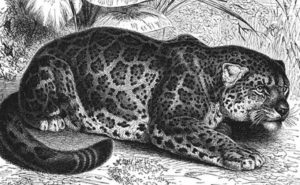 Stories of the Mexican onza trickled out of the great cat’s territories over the ensuing centuries and besides the story of the Lee brothers in the late 1930s, there have been a few other reports of this creature to gain the attention of the outside world. In 1926, cowboy C.B. Ruggles supposedly shot an onza near the Yaqui River in the state of Sonora. Ruggles took photos of the creature and wrote about its sleek body and the cat’s thin spotted legs often reported by other eyewitnesses. Sometime before 1930, American naturalist Frank Dobie reported shooting an onza that was caught in a trap. He skinned the cat but the pelt did not survive a bug infestation and disintegrated before he could get it to the United States for further examination. These few reports that did make it out of Mexico attracted derision from scientists, who often claimed that people sighting the mythical cat were misidentifying the common cougar. With a curious encounter in January of 1986, the onza only really began to pique the interest of cryptozoologists, or those who seek to discover, describe and study legendary creatures. Mexican rancher Andrés Rodríguez Murillo shot an enormous cat on his Sinaloa ranch. The rancher fired on the creature as it was about to attack him. Rodríguez later gave a detailed description of what he shot: It was not a cougar or a jaguar, but much larger and with a slender body and long legs like an African cheetah. It also had large ears and dark markings on its legs. The rancher showed the carcass to his neighbor, an experienced hunter named Manuel Vega. Vega told Rodríguez that his father had killed a similar animal in the 1970s and still had the animal’s skull. To Manuel Vega there was no doubt. They had before them the legendary onza. The two decided to preserve the specimen by freezing it and contacted a cryptozoologist. They reached out to J. Richard Greenwell, at that time the secretary of the International Society of Cryptozoology, or ISC. Greenwell had a particular interest in the onza and had already managed to track down and examine two alleged onza skulls. After sufficient back and forth, the Rodríguez specimen made it to the Regional Diagnostic Laboratory of Animal Pathology, belonging to Mexico’s Ministry of Agriculture located in Mazatlán, Sinaloa. Under the direction of American cougar researcher Dr. Troy Best, a Mexican team carefully dissected the gigantic cat and subjected it to intense scientific scrutiny. Richard Greenwell assisted. In his lab notes Greenwell wrote:
Stories of the Mexican onza trickled out of the great cat’s territories over the ensuing centuries and besides the story of the Lee brothers in the late 1930s, there have been a few other reports of this creature to gain the attention of the outside world. In 1926, cowboy C.B. Ruggles supposedly shot an onza near the Yaqui River in the state of Sonora. Ruggles took photos of the creature and wrote about its sleek body and the cat’s thin spotted legs often reported by other eyewitnesses. Sometime before 1930, American naturalist Frank Dobie reported shooting an onza that was caught in a trap. He skinned the cat but the pelt did not survive a bug infestation and disintegrated before he could get it to the United States for further examination. These few reports that did make it out of Mexico attracted derision from scientists, who often claimed that people sighting the mythical cat were misidentifying the common cougar. With a curious encounter in January of 1986, the onza only really began to pique the interest of cryptozoologists, or those who seek to discover, describe and study legendary creatures. Mexican rancher Andrés Rodríguez Murillo shot an enormous cat on his Sinaloa ranch. The rancher fired on the creature as it was about to attack him. Rodríguez later gave a detailed description of what he shot: It was not a cougar or a jaguar, but much larger and with a slender body and long legs like an African cheetah. It also had large ears and dark markings on its legs. The rancher showed the carcass to his neighbor, an experienced hunter named Manuel Vega. Vega told Rodríguez that his father had killed a similar animal in the 1970s and still had the animal’s skull. To Manuel Vega there was no doubt. They had before them the legendary onza. The two decided to preserve the specimen by freezing it and contacted a cryptozoologist. They reached out to J. Richard Greenwell, at that time the secretary of the International Society of Cryptozoology, or ISC. Greenwell had a particular interest in the onza and had already managed to track down and examine two alleged onza skulls. After sufficient back and forth, the Rodríguez specimen made it to the Regional Diagnostic Laboratory of Animal Pathology, belonging to Mexico’s Ministry of Agriculture located in Mazatlán, Sinaloa. Under the direction of American cougar researcher Dr. Troy Best, a Mexican team carefully dissected the gigantic cat and subjected it to intense scientific scrutiny. Richard Greenwell assisted. In his lab notes Greenwell wrote:
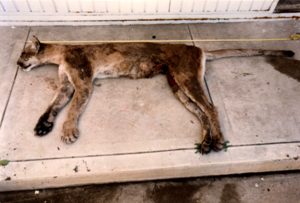 “Upon inspection, the cat, a female, appeared to be as described by the native people. It had a remarkable gracile body, with long, slender legs and a long tail. The ears also seemed very long for a puma, about 100 millimeters, and small horizontal stripes were found on the inside of its forelimbs, which, as far as has been determined to date, are not found in pumas. Well-developed mammae were observed, and its age was determined to be at least 4 years. It weighed about 27 kilograms, in life prior to freezing it probably weighed a little more, compared to a range of from 36 to 60 kilograms in adult female pumas. Its total length, at 186 centimeters, fell within the normal range of female pumas from 150 to 233 centimeters. The tail, however, was 73 centimeters in length, very long for a female puma of comparable size; the range in female pumas is from 53 centimeters to 81 centimeters.”
“Upon inspection, the cat, a female, appeared to be as described by the native people. It had a remarkable gracile body, with long, slender legs and a long tail. The ears also seemed very long for a puma, about 100 millimeters, and small horizontal stripes were found on the inside of its forelimbs, which, as far as has been determined to date, are not found in pumas. Well-developed mammae were observed, and its age was determined to be at least 4 years. It weighed about 27 kilograms, in life prior to freezing it probably weighed a little more, compared to a range of from 36 to 60 kilograms in adult female pumas. Its total length, at 186 centimeters, fell within the normal range of female pumas from 150 to 233 centimeters. The tail, however, was 73 centimeters in length, very long for a female puma of comparable size; the range in female pumas is from 53 centimeters to 81 centimeters.”
The team examining the specimen sent blood and tissue samples to the United States for further analysis. Texas Tech University declared that the Rodríguez specimen had great similarity and no significant differences with a standard cougar. As animals of different species are often close 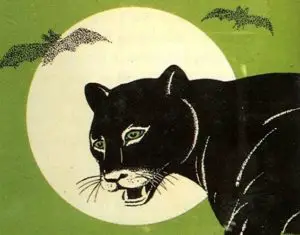 genetically, the Texas Tech preliminary investigation was inconclusive. Greenwell and Best did not follow up with any scientific publications regarding this supposed onza. The vague outcomes from this investigation led researchers to 4 possible conclusions regarding this mythical beast:
genetically, the Texas Tech preliminary investigation was inconclusive. Greenwell and Best did not follow up with any scientific publications regarding this supposed onza. The vague outcomes from this investigation led researchers to 4 possible conclusions regarding this mythical beast:
- This could truly be a previously unknown species, perhaps a surviving example of the prehistoric Truman’s cheetah, a North American variety of the African cheetah that died out 11,000 years ago.
- This could be a naturally-occurring hybrid of a cougar and a jaguar.
- The Rodríguez specimen and others could be mutant forms of a common cougar.
- This could be a geographically-specific subspecies of a cougar unique to northwestern Mexico.
In 1998 more detailed results on the Rodríguez onza were released. Comparative protein and mitochondrial DNA analyses revealed no significant differences between the supposed onza and the North American cougar. Given the many sightings and killings, this was the only specimen that underwent rigorous scientific analysis. Therefore, the researcher must use caution to apply the findings of the Rodríguez case to other reports of the mythical, majestic, gigantic cat of Mexico. Perhaps sometime in the near future, a rancher or cryptozoologist on the hunt for the onza may show the world a living breathing creature to put the mystery to rest once and for all.
REFERENCES
Carmony, Neil B. Onza! The Hunt for a Legendary Cat. Silver City, NM: High-Lonesome Books, 1995. We are an Amazon affiliate. Buy the book on Amazon here: https://amzn.to/2SWpyAB
Clark, Jerome. Unexplained! Strange Sightings, Incredible Occurrences and Puzzling Physical Phenomena. Canton, MI: Visible Ink Press, 2013. We are an Amazon affiliate. Buy the book on Amazon here: https://amzn.to/2YVBN3W
Marshall, Robert E. The Onza. Literary Licensing, LLC, 2012. We are an Amazon affiliate. Buy the book on Amazon here: https://amzn.to/2LqDCOh
“ShukerNature” web site. The official web site of Dr. Karl Shuker.

2 thoughts on “The Mexican Onza, Big Cat of Legend?”
HI MY NAME IS ISRAEL BORJA FROM HOUSTON TEXAS AND I WANT TO SHARE A STORY OF A ONZA , MY UNCLE SHOT AND KILLED AN ONZA IN STATE OF GUERRERO MEXICO AND HE TOLD ME THE THAT IT WAS A BIG CAT WITH A LONG TAIL.
I’ve seen one, back in the 90s. On my way to sonora, from chihuahua. At the sierra madre. Black in color, almost like a panther. But slimmer, if not more agil looking.. everyone would know it as onza. I guess a very few people have seen it.